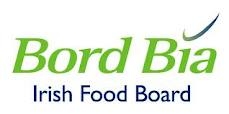

Fresh produce branding can be divided into a number of areas. One model is where vertical integration takes place: For example, with a brand like Chiquita, where the company that owns the brand owns farms, produces the crop and also carries out the distribution and marketing. With annual revenue of $3.07 billion USD for Chiquita, the company has the financial clout to create and maintain a memorable consumer brand. The company mascot “Miss Chiquita,” now Chiquita Banana, was created in 1944 by Dik Browne, who is best known for his Hägar the Horrible comic strip. Chiquita is a privately owned business.


A cooperative model is Zespri, where all New Zealand kiwifruits are marketed under the brand-name label Zespri. The branding move is intended to distinguish New Zealand kiwifruit from other fruit. Zespri International Ltd. is owned by 2,700 local growers through Zespri Group Ltd., which was established in 2000. Zespri has the role of promoting and selling kiwifruit in overseas markets, as well as establishing regulations on which kiwifruit can be sold in the export markets. The company has international sales of NZ$1.349 billion and, again, a budget to market their brand and a cooperative structure that prevents price competition between the producers undermining margins.
Another model for fresh produce branding is the royalty arrangement that Pink Lady have adopted. The growers specialise in growing apples, and the marketing company Corego, employed to do the marketing, specialise in selling and promoting the brand. Over 60% of the royalties collected go toward the marketing of Pink Lady. With a great apple to sell, strict quality standards and good marketing, the brand has become a household name, with worldwide sales of AUS$1.5 billion. Pink Lady can be grown in many of the countries it is sold in and, with a variety of climates to choose from, year round availability is achieved, although quality issues mean that it’s unlikely to be grown in Ireland or the UK.
Finally, retail brands can also be created by large fresh produce producers by devising a brand that has resonance with both retailers and consumers. The brand development starts with the consumer and understanding their requirements and preferences. The absolute key in convincing a retailer to stock your brand is demonstrating that they can increase market share and achieve a greater margin by listing your products. By studying consumer interest in provenance and authenticity, a brand that meets consumer expectations for fresh produce can be developed.
Qualitative research can provide evidence of consumer preference for the brand over standard offerings, and combining this together with carefully worked out marketing and category management plans will significantly increase your chances of being listed. For the continuing success of the brand, strict quality standards have to be created and maintained.








